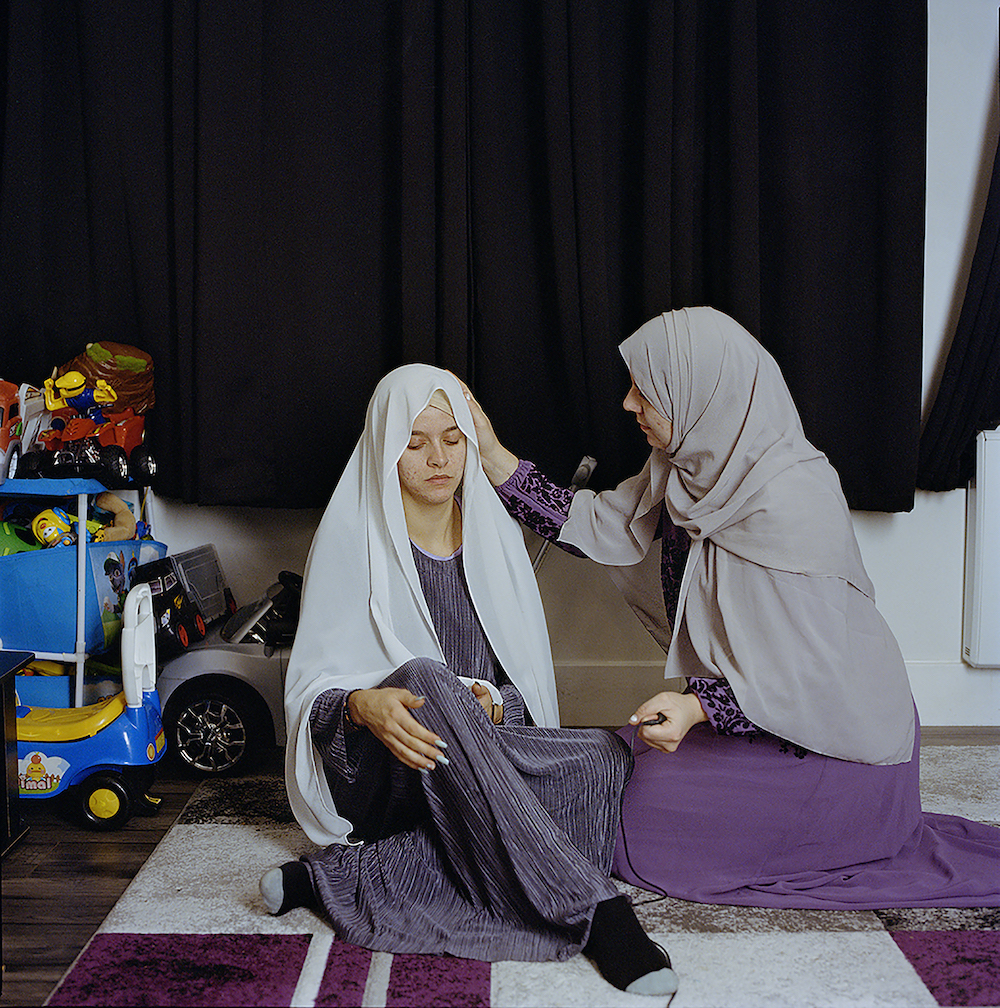Jodie Bateman’s empowering series raises awareness of the difficulties Muslims face in the West
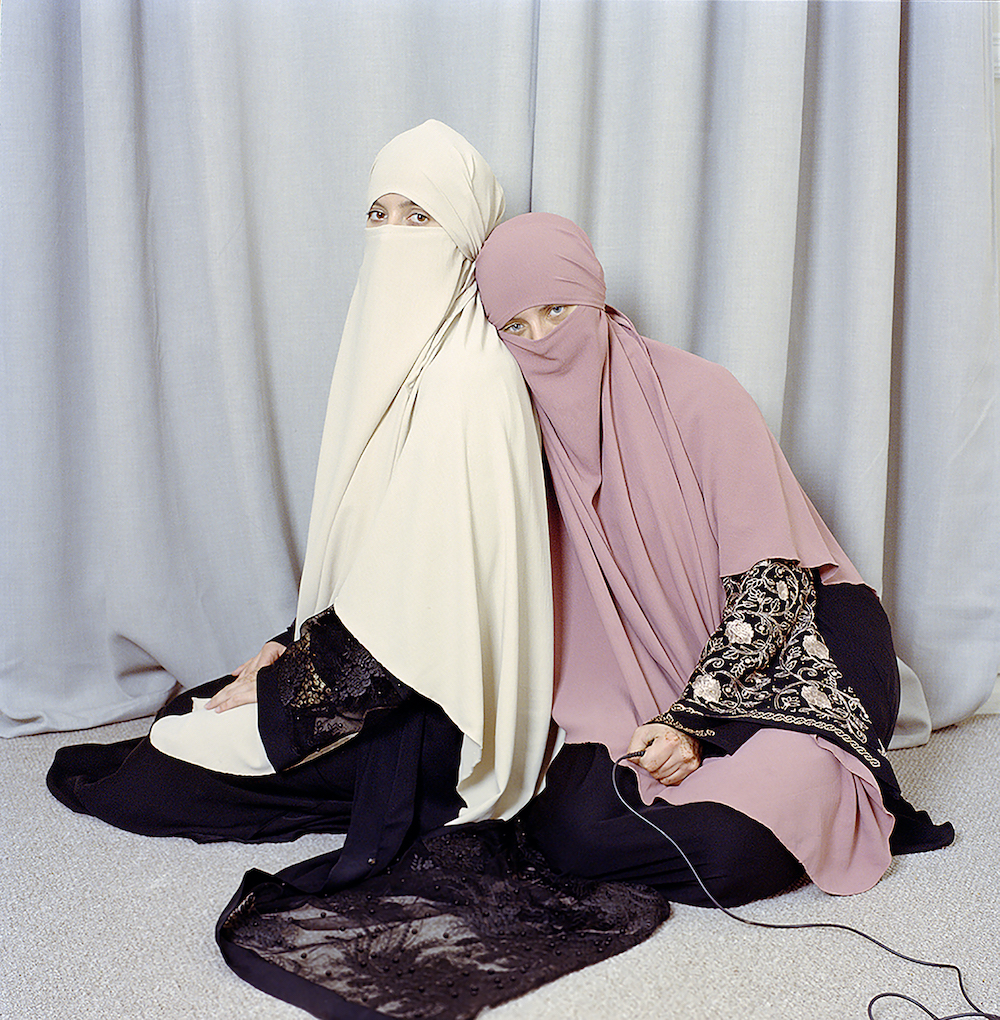
Jodie Bateman, a photographer who grew up in Earlsfield, London, converted to Islam in December 2017. During this period of her life, Jodie began questioning the stereotypes often pinned with being Muslim and living in Western society. Deciding to record these experiences with her lens, Jodie commenced work on My Hijab Has a Voice: Revisited – an authentic and autobiographical series that both challenges and empowers her subjects. Within the project, she takes predominantly self-portraiture with the odd portrait tossed in for good measure, placing herself and younger sister in the frame as they replicate historical paintings, those that often objectify women. The work is captivating, poised and provoking for the ways in which it demands attention from the viewer; she hopes to share a new perspective, to realign the stigma and to raise awareness of the difficulties Muslims face in the West. Below, I chat to Jodie about her journey into photography, her experiences with converting to Islam and what she strives to achieve through her imagery.
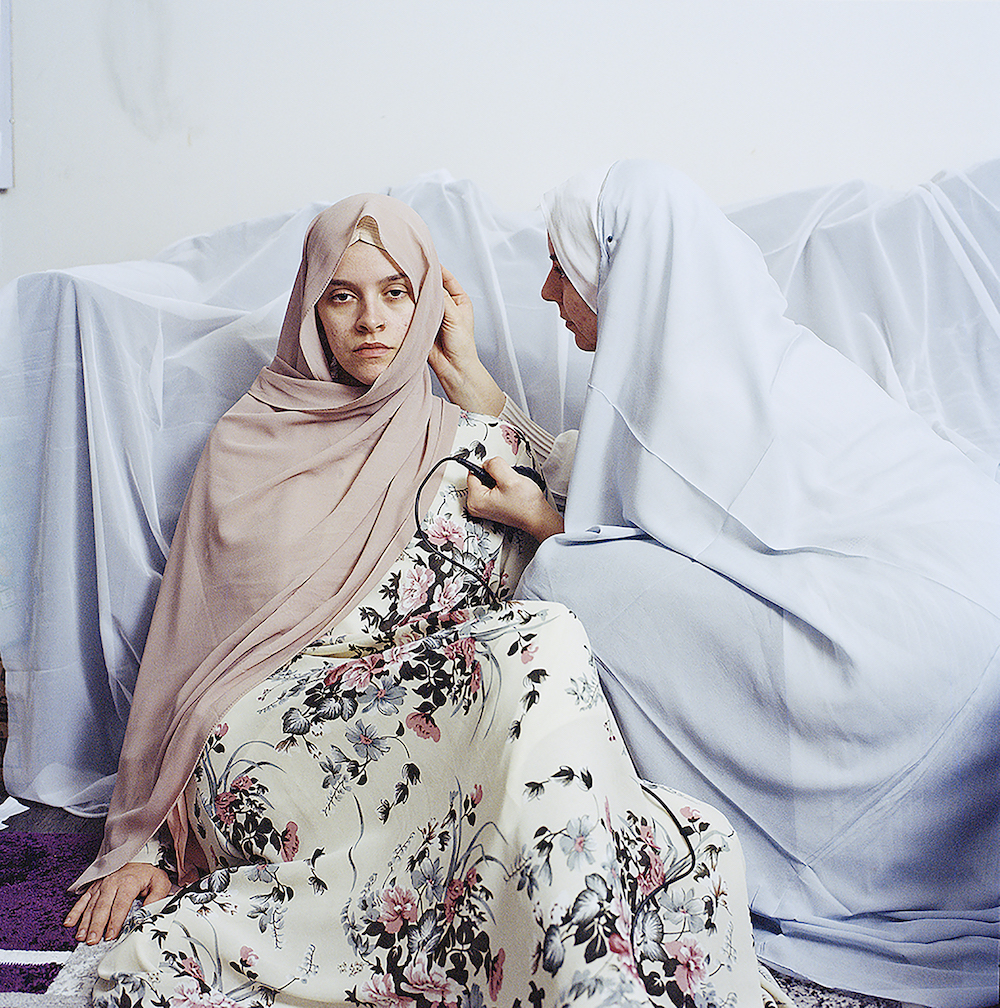
First, it would be great to hear about your journey into photography, what inspired you to pick up a camera?
I first fell in love with photography when I discovered my mum’s boxes of photographs as a little girl. She used to have loads of photographs printed from the little disposal cameras; she always had so many of them and I was always mesmerised by the photograph as a document or object. I remember holding it, looking into its information and then, when I got my first camera phone as a young girl – I think I was around 13 – I started shooting made up shoots with my sisters. That’s how it started. I knew from then on that I loved photography and taking pictures, so I decided to study it at college and so on.
What stories are you hoping to share in your work?
So far, it’s been a personal story about my journey and experiences, especially around the hijab and converting to Islam. Through my work, I’m trying to put a different narrative out there. I hope to take this further in the future and share other Muslim women’s experiences with the hijab too; I just want people to see it from our actual point of view and direct from our voices.
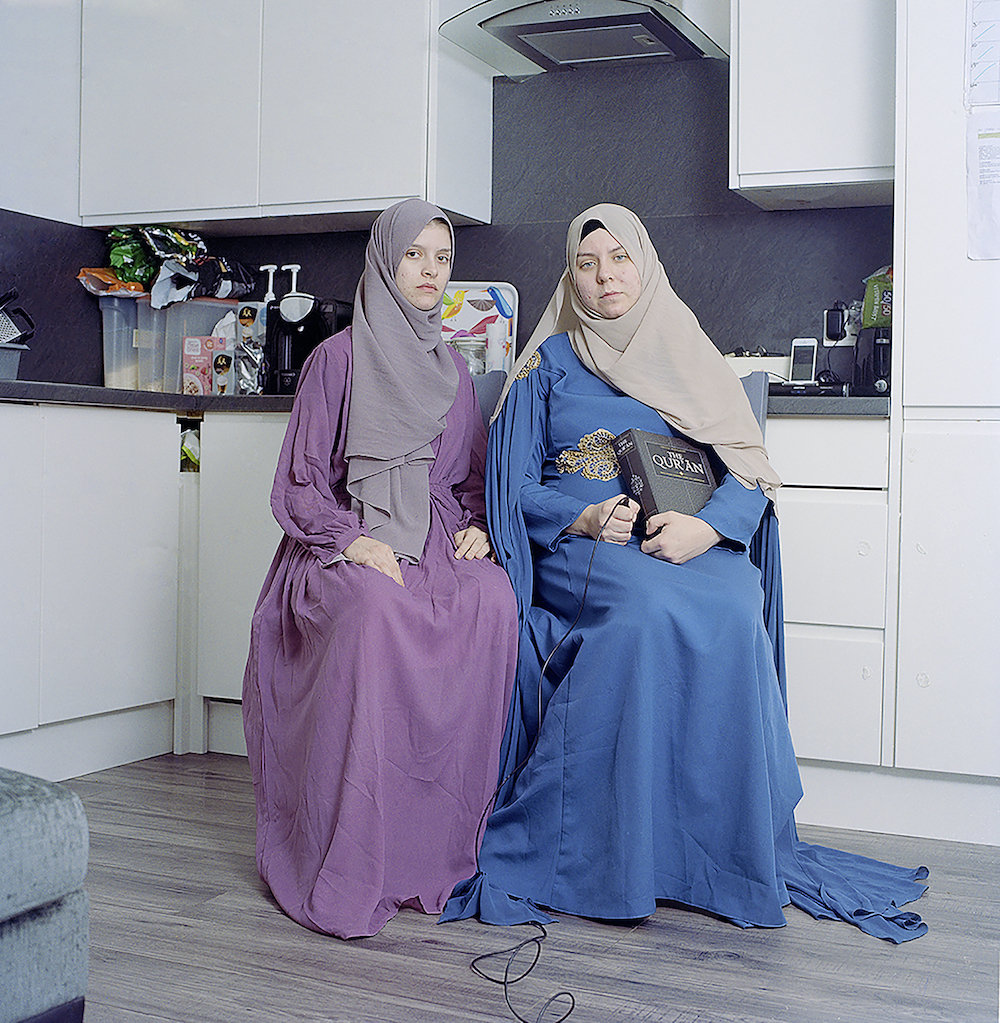
Can you tell me more about your personal experience with converting to Islam, and how this impacted your photography?
It changed my whole style. I found myself, and I realised the stories I wanted to tell and the issues I felt were important to me had changed. It’s had a huge impact on how I feel and how I am able to use photography. It’s such a powerful tool to be able to tell stories and raise awareness of issues, and being able to have your own unique voice with it.
What’s it like photographing your family, are they happy to be involved? How do you want to represent them in your imagery?
It’s easy because I am so comfortable around them, so I can really just be myself and be free in directing my project how I want to. I’ve never actually gone out of my comfort zone and not shot my family, but they are happy; they’re used to it and they like to take part and support my work In any way.
I guess it depends but, for my project, my little sister is like my muse. I have also done documentary photography with my family, representing them as they are at home as well as our relationships and bonds with each other.
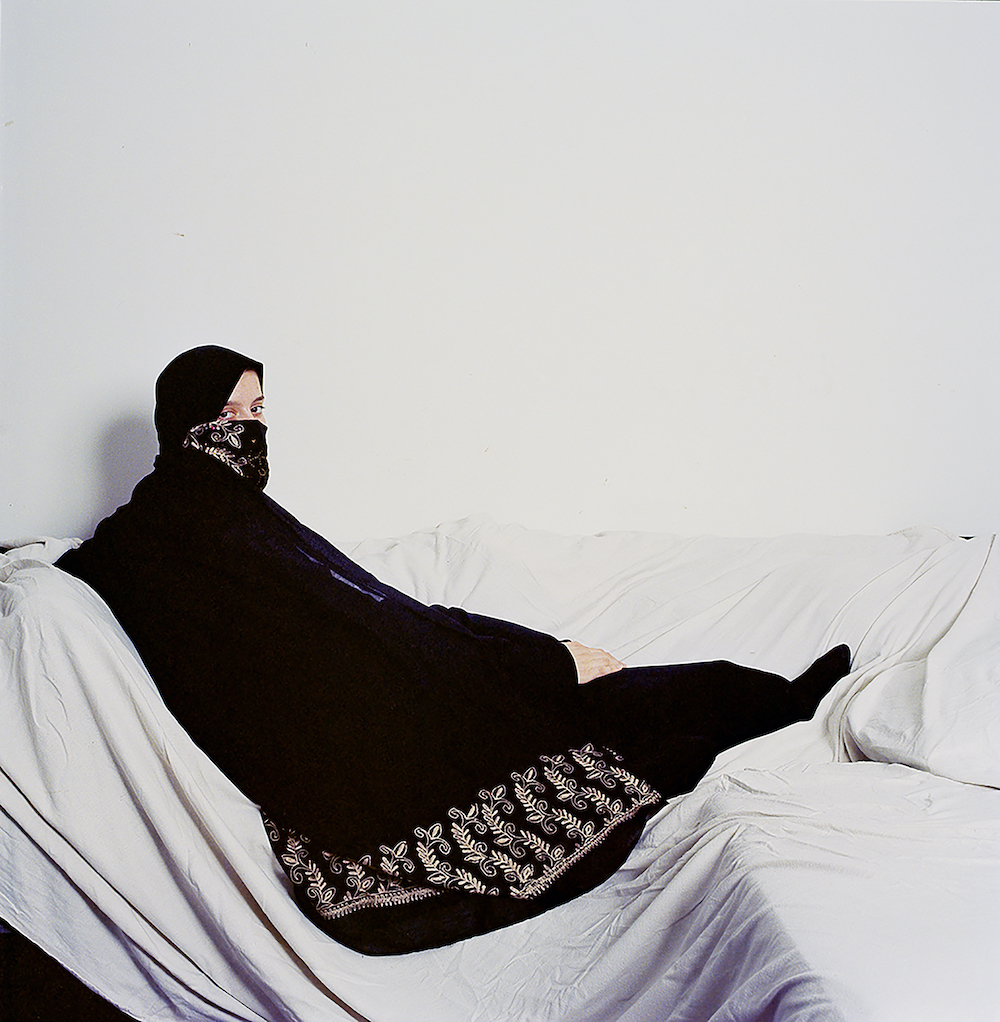
Can you pick out a couple of favourite shots and talk me through them?
This image is my favourite image from my recent project My Hijab Has A Voice: Revisited. It’s inspired by the painting La Grande Odalisque; it was known for being unnatural in how the nude woman is painted, and in my image she is posed in a similar manner but fully veiled. It may seem unnatural, as paintings and the objectification of women started as being fully nude only for the purpose of pleasing the male viewer – so it’s about reclaiming our bodies. Being fully veiled mimics these types of paintings whilst also showing the beauty in being veiled; our bodies concealed from eyes seeing us in this objectified way.
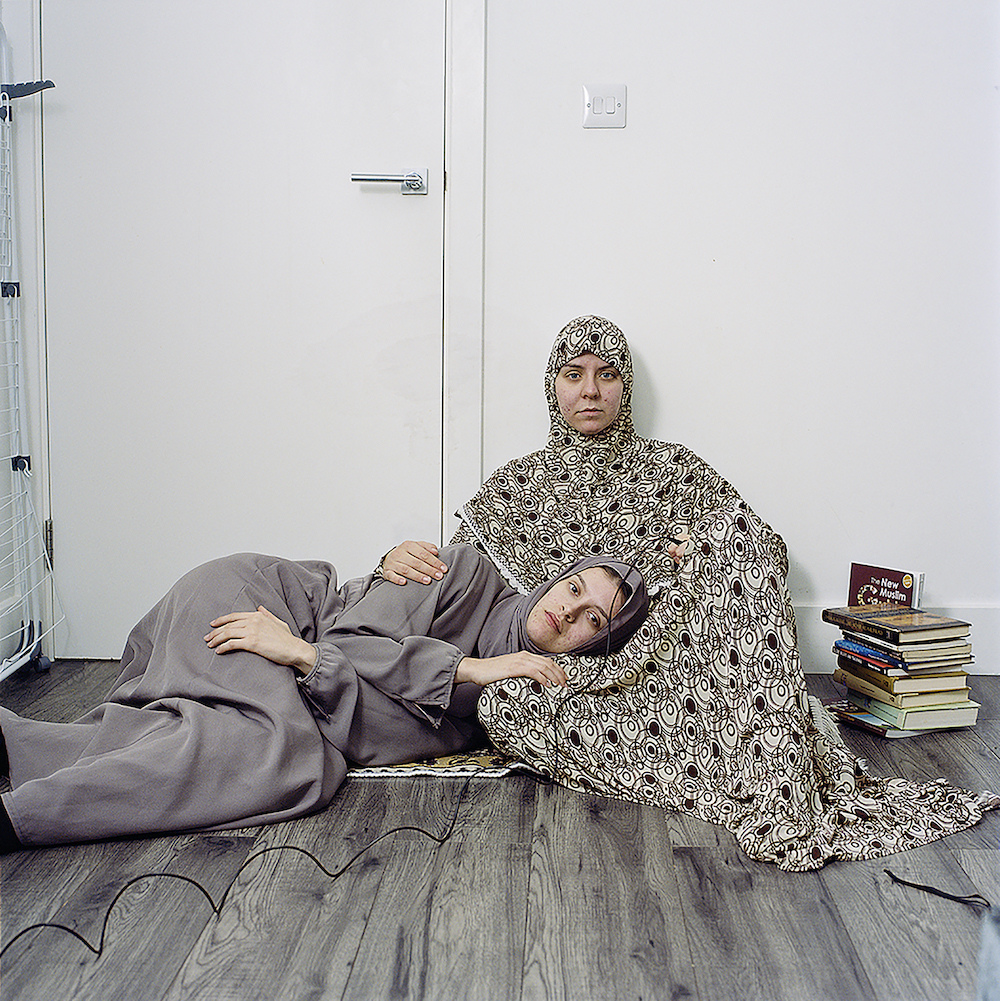
In this second image from my project My Hijab Has A Voice: Revisited, myself and my sister are fully covered. She is laying on my lap and we are connecting; it’s not sexual, it’s supportive and there are books which convey the message that, as a woman, I am educated. I always get asked if I converted for a man or if I was brainwashed, as if a women cant make an educated decision to be a certain way. it also mimics paintings, as usually they leave bits of information around like mirrors and brushes to convey this vain message that women are in competition and compete against each other.
The last image is another favourite of mine again from my project My Hijab Has A Voice: Revisited. I am holding her head, her hair is out and we are both covered wearing black. This image concept is based around the idea that all women suffer from being told what to wear; whether we are being forced to cover or being forced to uncover, we are constantly being managed by men. This image is like a symbol of support from women to women, no matter what race or religion or how we dress. We should stick by each other and not against each other.
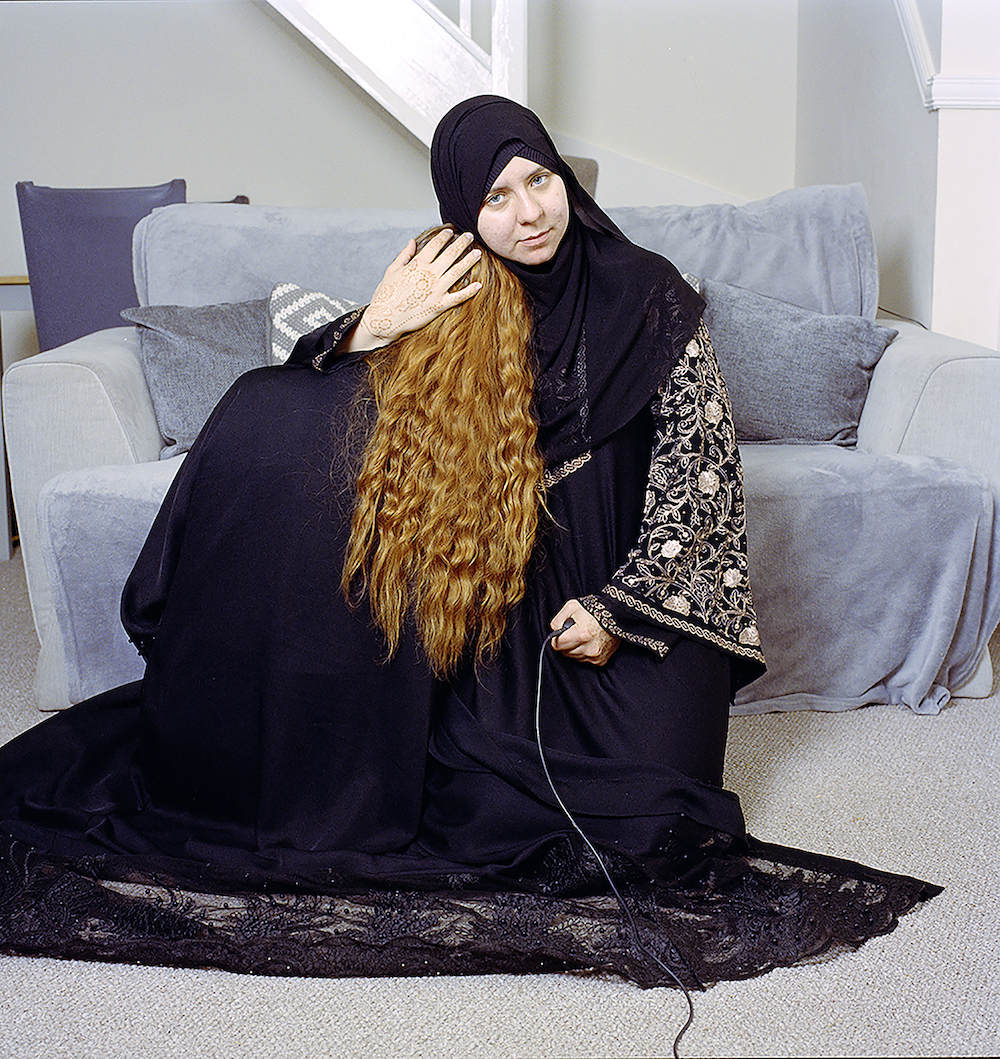
What are the key takeaways for your audience?
I hope it’s a positive reaction and that they are interested in listening. My message is that, as a woman, I can be educated enough to make my own decisions. I don’t need to be influenced by a man, that Islam is not what the media portrays and if people take time to listen to Muslim women especially, they can learn a lot and see a more meaningful side to our stories.
